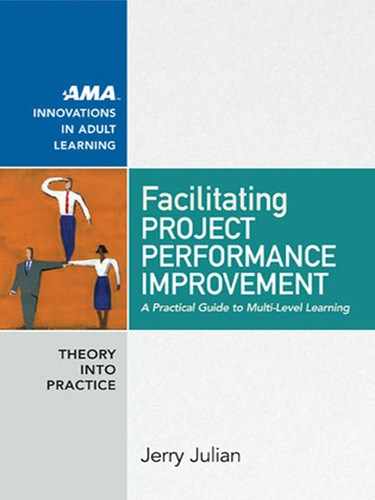American Management Association 169
www.amanet.org
When project organizations do not have e ective mechanisms for im-
provement, learning remains largely informal and incidental. Improve-
ment, innovation, and problem solving are often left to chance. Issues may
go unaddressed or avoided, creating surprises, blowups, or “ re drills” that
can occur abruptly, triggering a red light on the “tra c light” reporting
system for project status. In these situations, project teams are hastily as-
sembled so that senior managers can nd out what went wrong, creating
an environment that is riven by political in ghting, personal threats to
jobs and career prospects, “blamestorming,” and avoidance of the “truth”
for fear of reprisals by managers or peers. The result is that people at all
levels actively avoid re ection, largely because it is perceived as being too
threatening, political, ine ective, or all of the above. This creates a self-
reinforcing cycle, because when structured re ection is avoided, the result
is further opportunities for blowups and surprises.
Multi- level learning breaks this red- light learning cycle by providing
organizations with a mechanism for continually improving results at each
of the three levels: project, process, and strategy. The three levels of multi-
level learning create a synergistic e ect that enables teams at each level to
build on the learning of the others, including project teams, program man-
agement teams, and senior management teams. This ensures that the right
projects are selected at the right time, that project managers and teams are
pooling their collective knowledge to streamline cross- project processes,
and that project teams are continually innovating over the course of their
work to improve project outcomes for customers and clients.
The multi- level learning coach facilitates improvement at each level
8 CONCLUSION
170 Conclusion
American Management Association
www.amanet.org
through regular action- re ection cycles. The coach has no decision- making
authority and serves as a substantively neutral third party who helps the
organization overcome defensive routines that block learning.
The program management o ce (PMO) or program management
function provides the “glue” for facilitating interlevel communication and
feedback. As discussed at length in Chapter 4, the PMO leader serves the
role of knowledge broker between the various communities of practice,
providing coordination, translation, and alignment that connects their
practices and embeds knowledge in the organization’s processes, systems,
methodologies, and tools to enable what Victoria Marsick and Karen
Wat kins (1999) call continuous systems- level learning. Because of the im-
portance of the PMO leader’s role, it is therefore essential that he be an
e ective knowledge broker. As discussed in Chapter 4, the leader needs
legitimacy and social capital in order to have the in uence required to fa-
cilitate continuous systems- level learning. This is not an easy role to play,
yet it is an essential one if the organization is to learn from past failures,
avoid repetition of mistakes, reduce waste, satisfy customers, and continu-
ally learn from experience.
Multi- level learning helps the organization reduce the risk of strategic
failure, deliver projects and programs faster, make more e cient use of its
scarce investment capital, satisfy customers, and create a more innovative,
collaborative work environment for those involved. In this way, organiza-
tions can use multi- level learning to transform themselves so that they
achieve higher levels of performance, signi cant competitive advantage,
and success in reaching their strategic goals.
..................Content has been hidden....................
You can't read the all page of ebook, please click here login for view all page.
